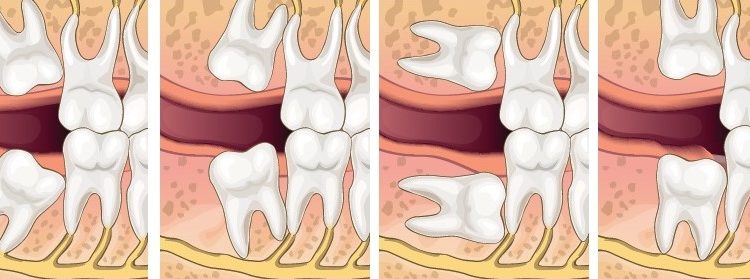
How Much Do YOU Know about Cavities?
What is Myth and What is Fact?
Let’s be honest. Nobody wants to hear the words, “You have a cavity.” However, cavities (dental caries, tooth decay) remain the most prevalent chronic disease in both children and adults. A National Health and Nutrition Exam Survey conducted by the NIH found that 92% of adults ages 20 to 64 have had at least one cavity, and 26% have untreated cavities! Surprising stats, especially since cavities are largely preventable.
There is no question that dental care is imperative to the health of our teeth, gums, and mouth. Unfortunately, there are tons of myths and misconceptions about dental care…and cavities. Over the years, many of these myths have turned into what people consider common knowledge.
In order to ensure we are taking better care of our teeth and overall health, it is important to have the facts. Here is a look at 11 common myths about cavities and why they couldn’t be further from the truth.
MYTH #1: Sugar Is the Primary Cause of Cavities
FACT: This may be one of the most talked about “facts” when it comes to cavities, but it is actually a myth. Cavities form through a combination of bacteria and acid, which then attacks your teeth. “The truth is, acid produced by bacteria in your mouth is the cause of cavities,” says Kimberly A. Harms, DDS, an American Dental Association spokeswoman. Keep in mind that while sugar itself does not lead to cavities, the bacteria that does is often triggered by carbohydrates, including rice, potatoes, breads, fruits, and vegetables.
MYTH #2: Acidic Food and Soda Cause Tooth Decay
FACT: Acidic foods can break down your teeth‘s outer shell (enamel), weaken the tooth, and make teeth more prone to decay. Even though sodas and foods high in acidity do not cause cavities, they are damaging to your tooth enamel. Acidic foods – think lemons, citric juices and many soft drinks – can actually cause erosion of the tooth-protecting enamel, weakening the tooth and making it more prone to decay.
MYTH #3: Children Get More Cavities Than Adults
FACT: In reality, there has been an increase in senior citizens and adults developing cavities over children. Over the last 20 years, instances of tooth decay and cavities are actually down in children! This is in large part due to the development of sealants, fluoridated water and preventative care.
MYTH #4: Placing Aspirin Near a Toothache will Ease the Pain
FACT: To ease the pain of a toothache, you will have to actually swallow the aspirin. While swallowing an aspirin can easy discomfort you might experience as a result of a cavity, the folk remedy of placing an aspirin near the source of tooth pain can actually damage your gum tissue. Aspirin is acidic, and when it begins to dissolve along the gum line it can cause a chemical burn, which might result in the formation of an oral abscess.
MYTH#5: All Fillings Will Need to Replaced
FACT: Fillings do have a life expectancy, but it depends on tooth wear and oral hygiene. Unless something goes terribly wrong or the tooth sustains further damage, you should be able to keep the same filling for your entire life. Some fillings are more prone to breaking down, so they may need to be replaced eventually, but this is highly uncommon. Once you have a cavity filled, the decay spot is removed. And if you take care of your teeth, the decay from the spot that was filled will most likely stay clear.
MYTH #6: You Will Know When You Have a Cavity
FACT: Unfortunately, mild tooth decay doesn’t come with any symptoms. Those who associate cavities with pain are usually experiencing a more advanced type of tooth decay that has caused damage to the nerve. Routine dental screenings are important to catch a cavity before it casues pain.
MYTH #7: Cavities Are More Likely Between Teeth and Gaps Can Lead to Cavities
FACT: Anywhere bacteria can hide that you cannot reach with a toothbrush or floss is a likely place for decay, and bigger gaps are easier to keep clean. As long as you keep the space free of bacteria, wide spaces are less prone to decay. Keep an eye on small gaps, though. Food may get stuck there and lead to cavities if it’s not cleaned out.
MYTH #8: Bruxism (Clenching and Grinding) May Lead to Cavities
FACT: Cavities come from acid-producing bacteria, but clenching and grinding are among the worst things you can do to your teeth. With normal chewing, teeth touch for a tiny fraction of a millisecond, which causes little stress. But clenching and grinding put a huge amount of pressure on your teeth. The strain can eventually cause cracks and fractures of your teeth, which speeds up tooth decay…those cracks and chips create a home for bacteria where your toothbrush won’t reach.
MYTH #9: Cavities Are the Only Reason for a Root Canal
FACT: You need a root canal if the nerve inside a tooth is damaged. An unfilled cavity can lead to a root canal, but so can other things, like clenching and grinding.
MYTH #10: Babies Can’t Get Cavities
FACT: Any enamel, especially in young children, is prone to decay. In children, the most common reasons cavities form are due to drinking sugary beverages, being exposed to cavity causing bacteria, or not getting enough fluoride. To protect their teeth, limit sugary drinks and snacks and instill healthy brushing and flossing habits early on.
MYTH #11: Frequent Snacking Will Help Produce Saliva and Ward off Cavities
FACT: Chewing activates saliva flow in the mouth. Saliva is full of minerals like calcium and phosphate that can help protect enamel, so it would be reasonable to think that eating several times a day would help keep teeth healthy. But there’s a catch – constantly introducing starches and sugars into the mouth keeps acid production up, so more enamel is damaged. Acids can continue to form up to 20 minutes later after you’ve stopped eating! But you don’t need to give up healthy snacks, even those that do contain natural sugars, like fruits or whole grains. The key is to limit constant grazing so that teeth have some time to recover.
Cavities start small and often happen without notice, so knowing how to best prevent them can be confusing. Knowing the facts can help you keep your smile healthy for years to come. Prevention is the key. Brush twice a day and floss daily. If bacteria are removed from your mouth daily, you won’t get cavities!
Source Credit:
http://www.nidcr.nih.gov
http://www.mayoclinic.org
http://www.mouthhealthy.org
http://www.urmc.rochester.edu
http://www.agd.org
http://www.epa.gov
http://www.webmd.com




